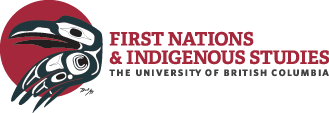What is a band?
A “Band”, or “Indian Band,” is a governing unit of Indians in Canada instituted by the Indian Act, 1876. The Indian Act defines a “band” as a “body of Indians,”
a) “for whose use and benefit in common, lands, the legal title to which is vested in Her Majesty, have been set apart”
b) has funds held for it by the federal government, and
Indian and Northern Affairs Canada (INAC) is the federal government department responsible for administering the Indian Act and policies and programs relating to bands, including disbursement of administrative monies, social service programs, and educational programs; band administration is responsible for the day-to-day functioning of band affairs. Other federal departments provide some funding and program support to bands. For example, Health Canada provides bands with health care funding and programs, and Canada Mortgage and Housing Corporation provides housing funding and programs. Many bands prefer to be called “First Nations.”
Historically, Aboriginal peoples have had their own unique and diverse social and traditional governing structures. Bands were established as a part of Canada’s early colonial policy whose aim was to assimilate Indians into colonial society by disrupting traditional forms of governance and imposing a municipal-style of local governance.
Most bands hold reserve lands, though bands and band members technically do not own the land because the legal title to reserves is vested in the Crown and is held in trust for the band by the Crown. Most band political and administrative offices are located on reserves. Band members may live on reserves, though many live off reserve lands due to lack of employment, housing and adequate programs and services.
While today bands have increasing control of and responsibility for their internal affairs, the Minister of Indian Affairs still has significant authority over the ways in which bands function. For example, a band council resolution may be decided by the band council but before it has legal authority it must be approved by the Minister of Indians and Northern Affairs or his/her designate.
Structure
Bands are led by band councils comprised of a chief and councilors, who are elected by band members typically every two years under election procedures defined by the Indian Act, or alternatively by custom election codes also authorized under the Indian Act. According to the Indian Act, a band may have one elected chief and one elected councilor for every 100 band members, with a minimum of two councilors required per band. Band councils are responsible for the governance and administration of band affairs, including education, band schools, housing, water and sewer, roads, and other community businesses and services.
Traditionally, some First Nations chiefs were hereditary. Band council structures have since replaced hereditary leadership with elected chiefs. Some Bands continue to recognize hereditary chiefs whereas some do not.
Membership
Band membership entitles band members to live on reserve, vote in band elections and referendums, and share in band assets.
As an outcome of the 1951 amendments to the Indian Act, the Department of Indian and Northern Affairs maintained a register of all people with Indian status registered under the Indian Act. Generally, those who were registered were also band members. However, the 1985 amendments to the Indian Act recognized bands’ rights to determine their own membership according to the criteria established in Bill C-31. This Bill removed discriminatory provisions against women that married a non-Indian or a non-status Indian man, now allowing these women to retain their status and be able to pass Indian status onto their children, thus allowing them to stay members of their band.
Under section 10 of the Indian Act, bands may have their own membership codes if a majority of band electors consent to these codes, and if these membership codes do not deprive membership to those who acquired membership under previous rules. Membership codes are maintained by Indian and Northern Affairs Canada.
By Karrmen Crey
Recommended Reading
Canada, “Part Two: False Assumptions and a Failed Relationship,” in Report of the Royal Commission on Aboriginal Peoples: Looking Forward, Looking back. Volume 1. Ottawa: the Royal Commission on Aboriginal Peoples, 1996.
Canada. The Indian Act (An Act Respecting Indians.) R.S., 1951, c. I-5.
Available online at: http://laws-lois.justice.gc.ca/eng/acts/i-5/
Endnotes
1 The Indian Act’s definition is as follows:
“band” means a body of Indians
(a) for whose use and benefit in common, lands, the legal title to which is vested in Her Majesty, have been set apart before, on or after September 4, 1951,
(b) for whose use and benefit in common, moneys are held by Her Majesty, or
(c) declared by the Governor in Council to be a band for the purposes of this Act

